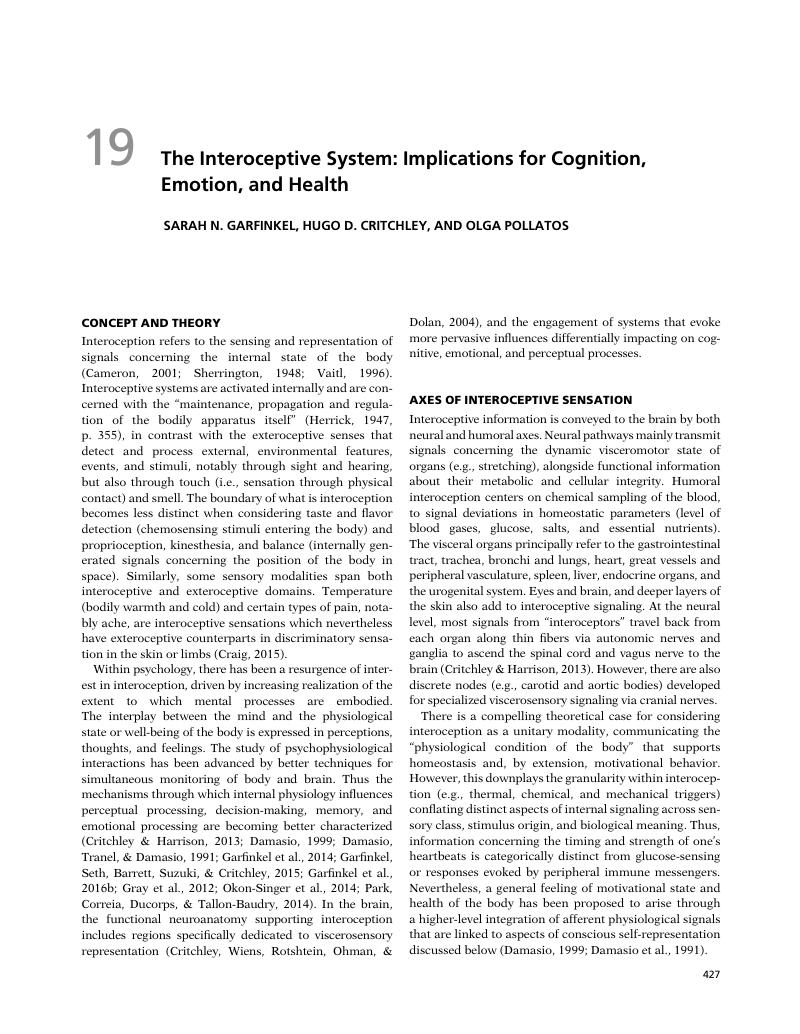Book contents
- Handbook of Psychophysiology, Fourth Edition
- Handbook of Psychophysiology
- Copyright page
- Contents
- Figures
- Plates
- Tables
- Contributors
- Foundations
- Systemic Psychophysiology
- Topical Psychophysiology
- 18 From Homeostasis to Allodynamic Regulation
- 19 The Interoceptive System: Implications for Cognition, Emotion, and Health
- 20 Emotion
- 21 Stress Hormones in Psychophysiological Research: Emotional, Behavioral, and Cognitive Implications
- 22 Developmental Processes
- 23 Language
- 24 Behavioral Medicine and Psychophysiology
- 25 Psychophysiology in Pursuit of Psychopathology
- 26 Detection of Deception
- General Methods
- Index
- Plate section (PDF only)
- References
19 - The Interoceptive System: Implications for Cognition, Emotion, and Health
from Topical Psychophysiology
Published online by Cambridge University Press: 27 January 2017
- Handbook of Psychophysiology, Fourth Edition
- Handbook of Psychophysiology
- Copyright page
- Contents
- Figures
- Plates
- Tables
- Contributors
- Foundations
- Systemic Psychophysiology
- Topical Psychophysiology
- 18 From Homeostasis to Allodynamic Regulation
- 19 The Interoceptive System: Implications for Cognition, Emotion, and Health
- 20 Emotion
- 21 Stress Hormones in Psychophysiological Research: Emotional, Behavioral, and Cognitive Implications
- 22 Developmental Processes
- 23 Language
- 24 Behavioral Medicine and Psychophysiology
- 25 Psychophysiology in Pursuit of Psychopathology
- 26 Detection of Deception
- General Methods
- Index
- Plate section (PDF only)
- References
Summary

Information
- Type
- Chapter
- Information
- Handbook of Psychophysiology , pp. 427 - 443Publisher: Cambridge University PressPrint publication year: 2016
References
Accessibility standard: Unknown
Why this information is here
This section outlines the accessibility features of this content - including support for screen readers, full keyboard navigation and high-contrast display options. This may not be relevant for you.Accessibility Information
- 4
- Cited by
